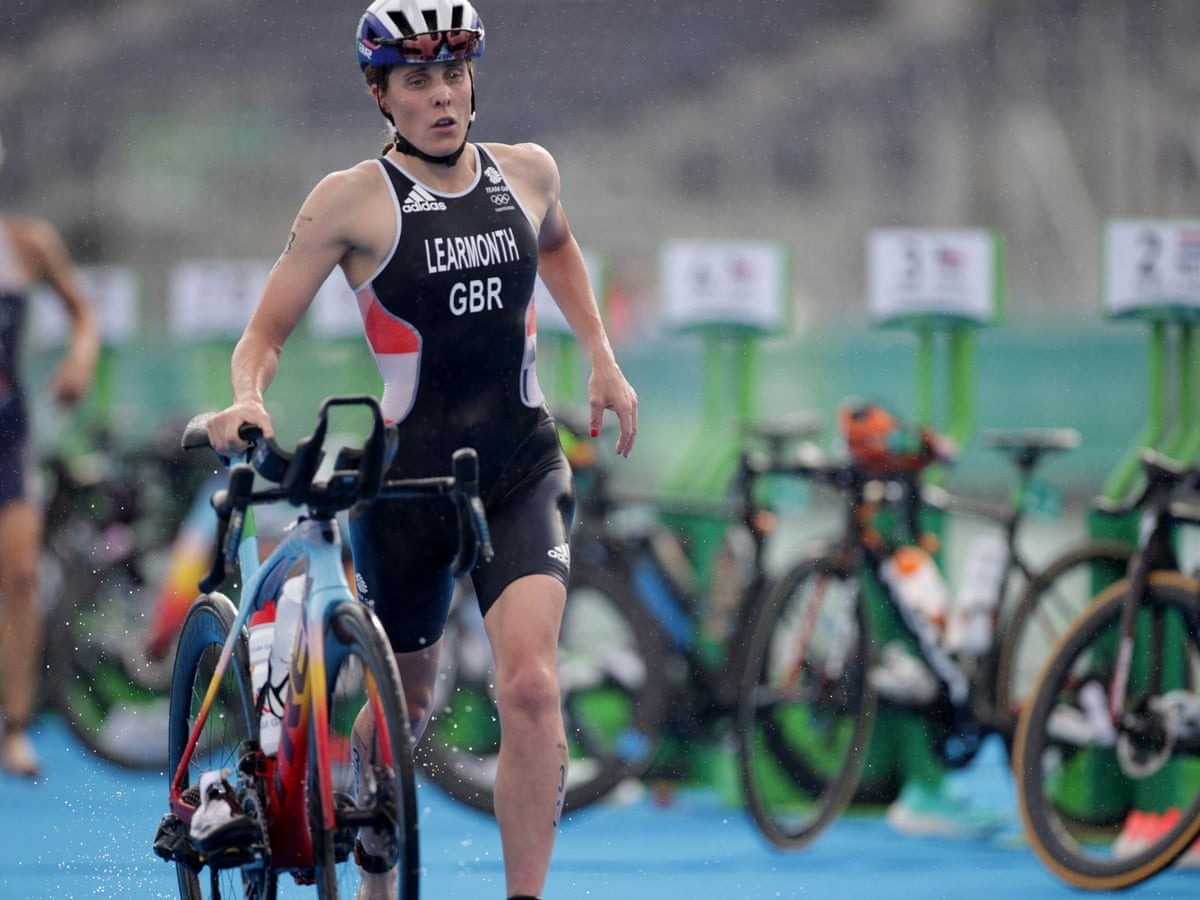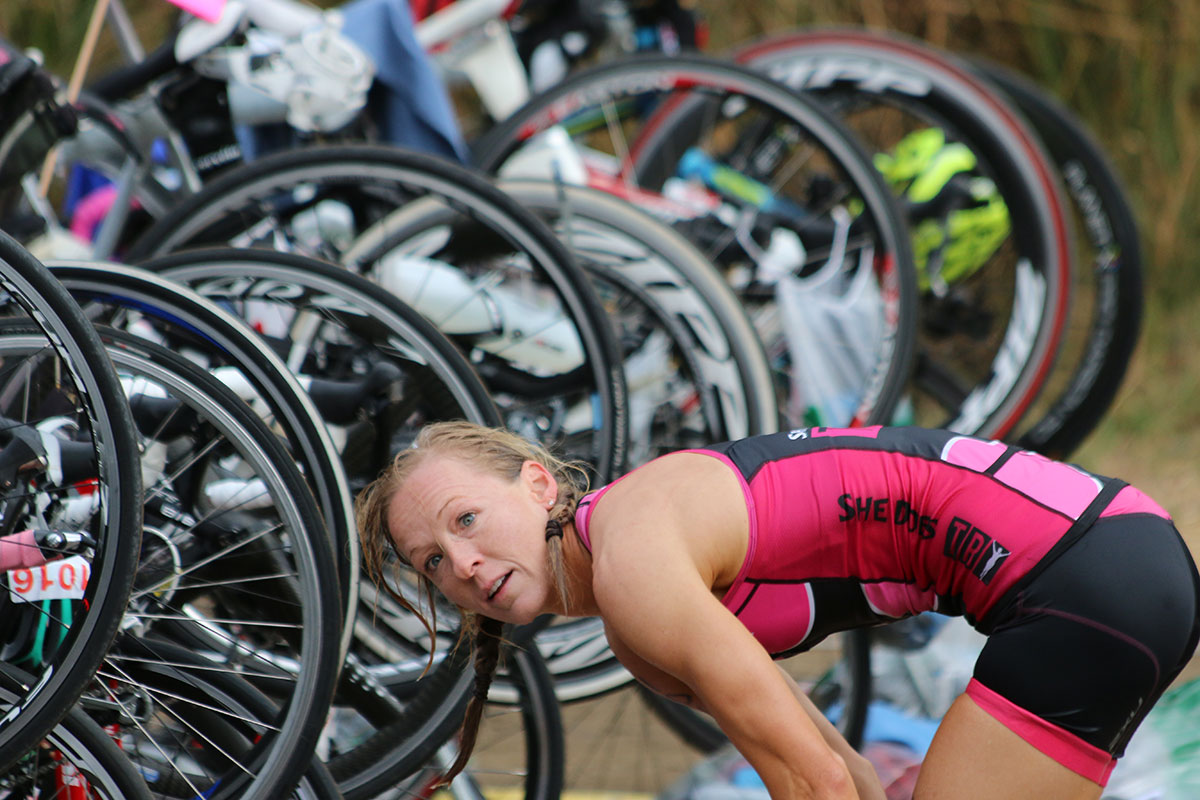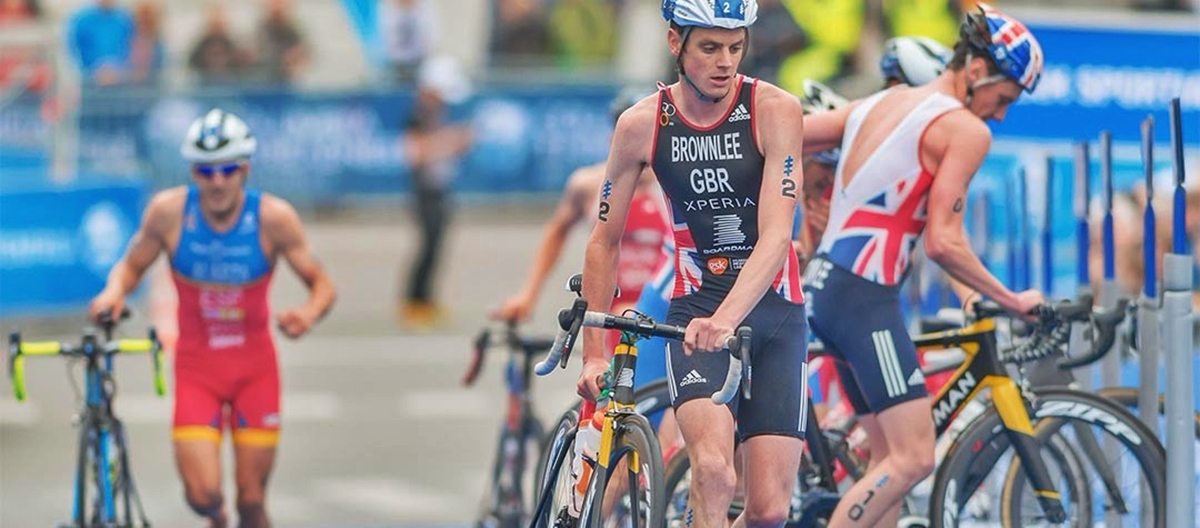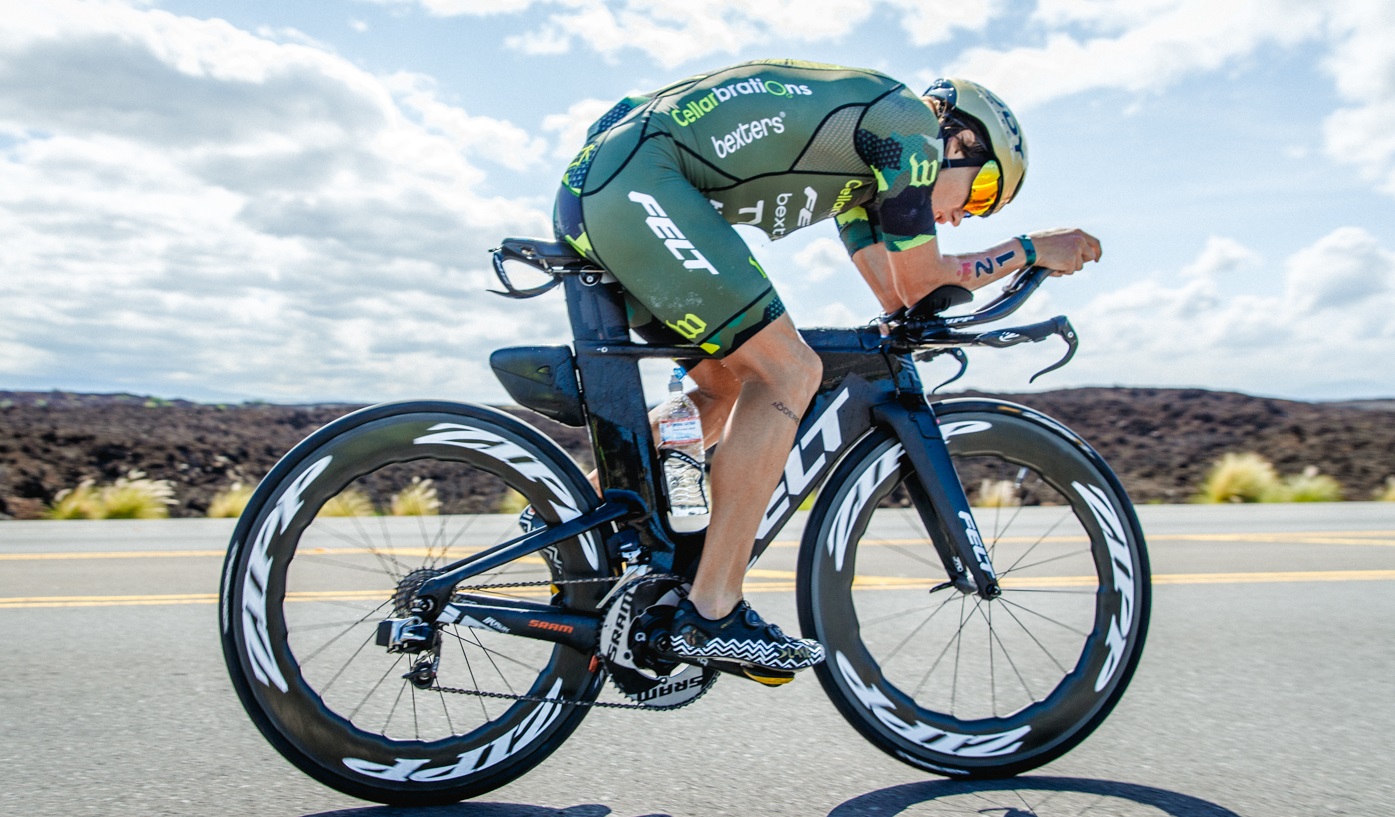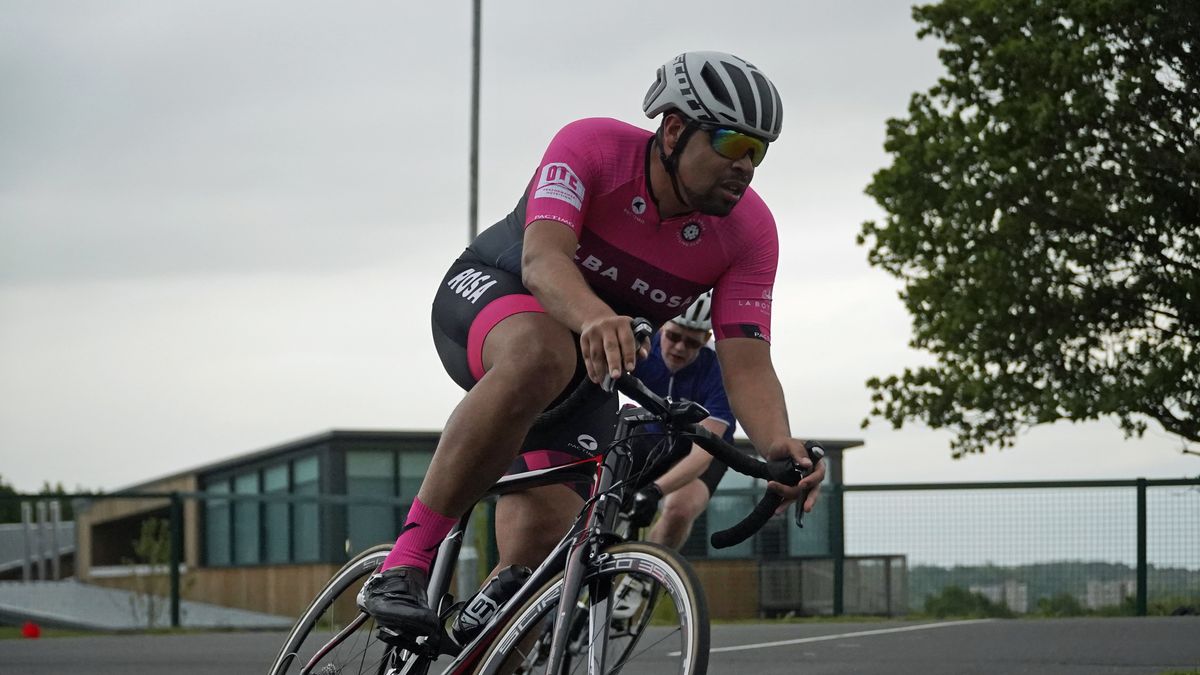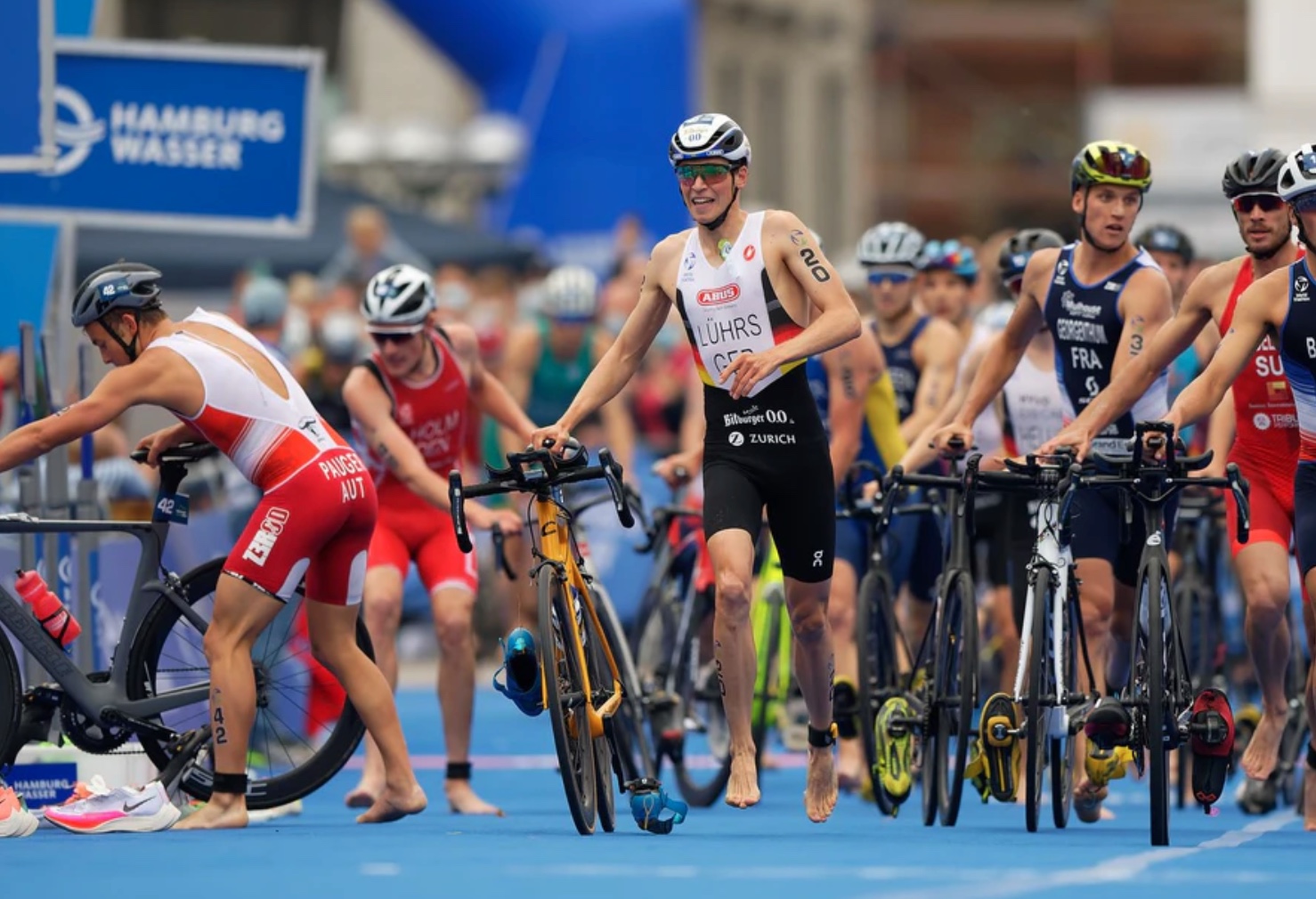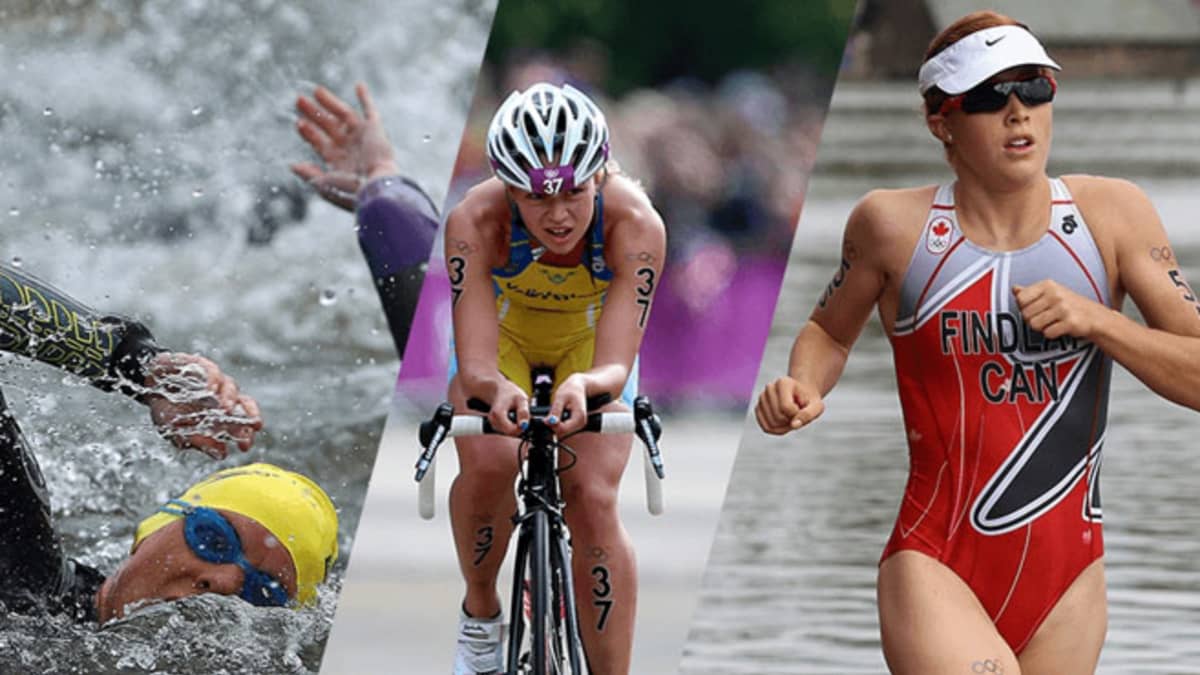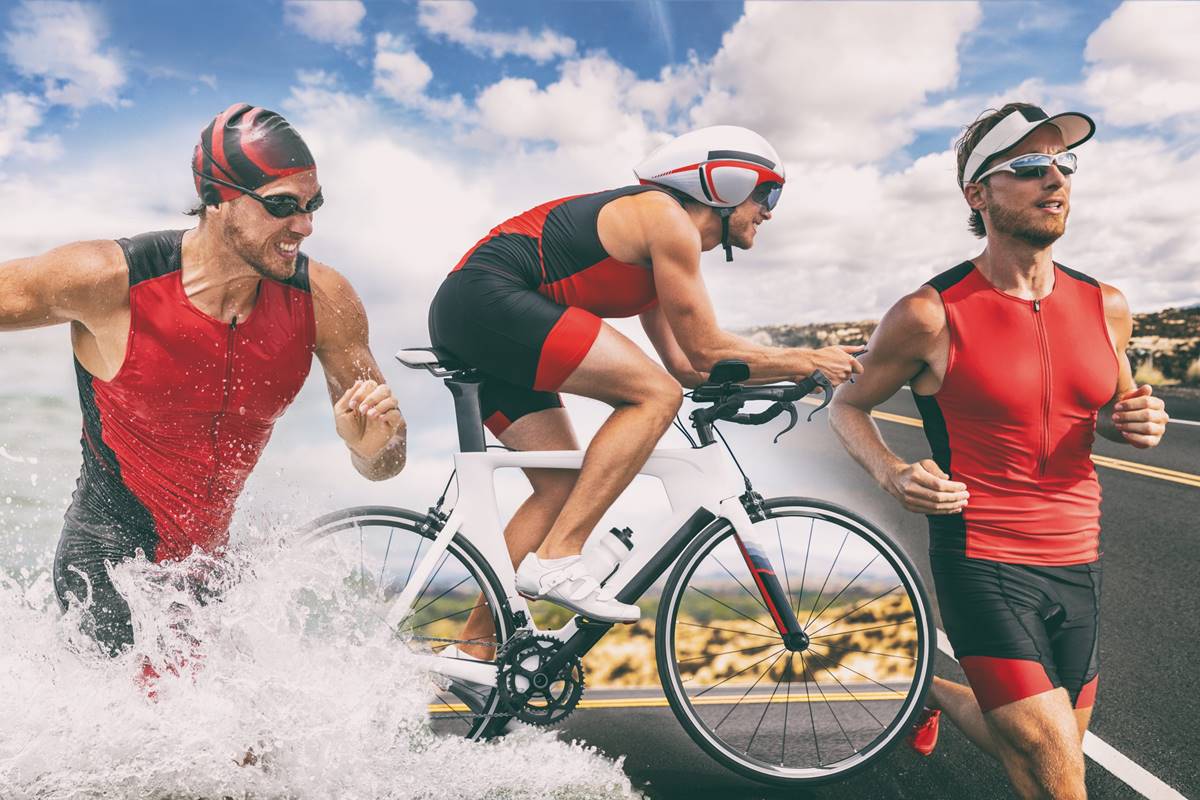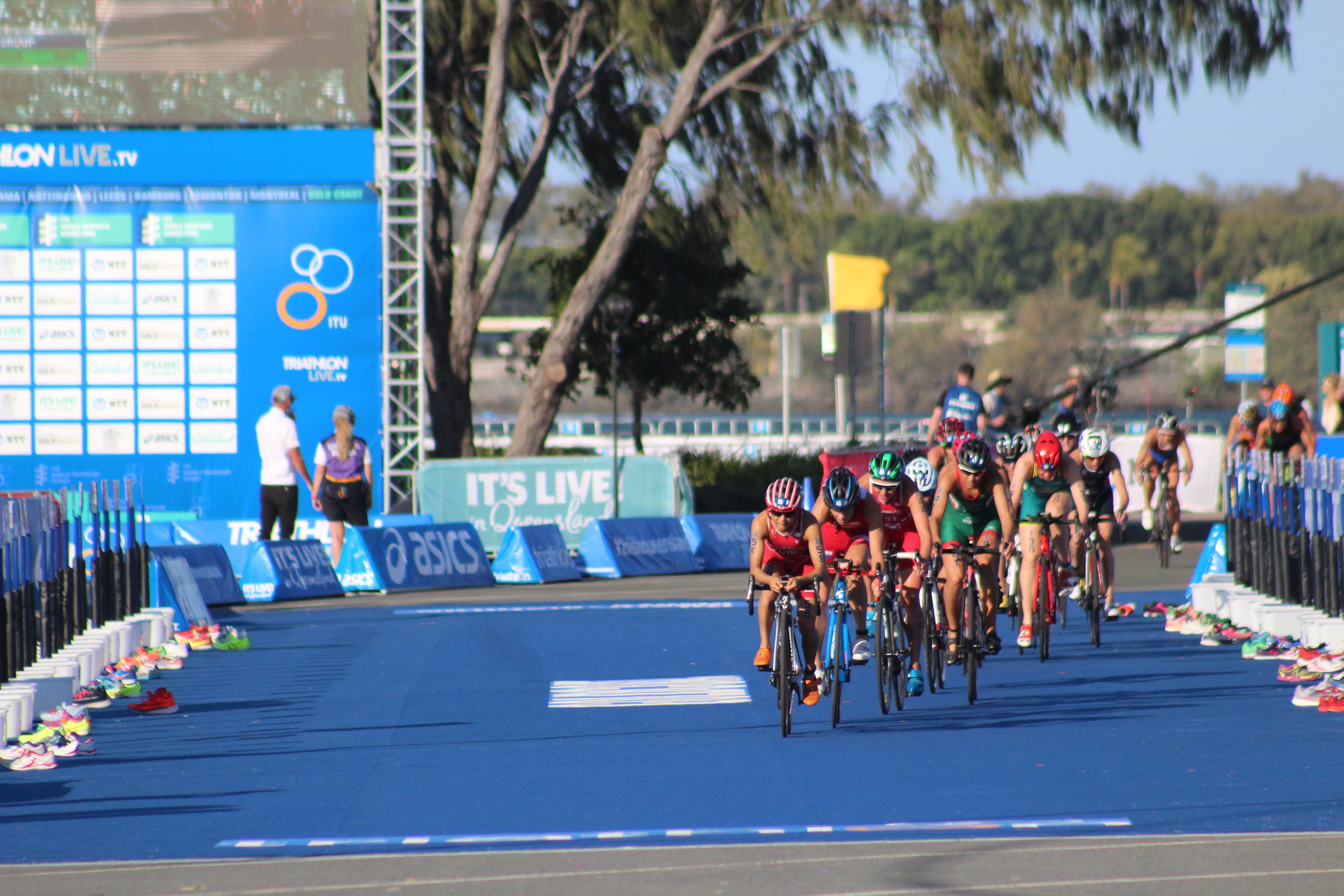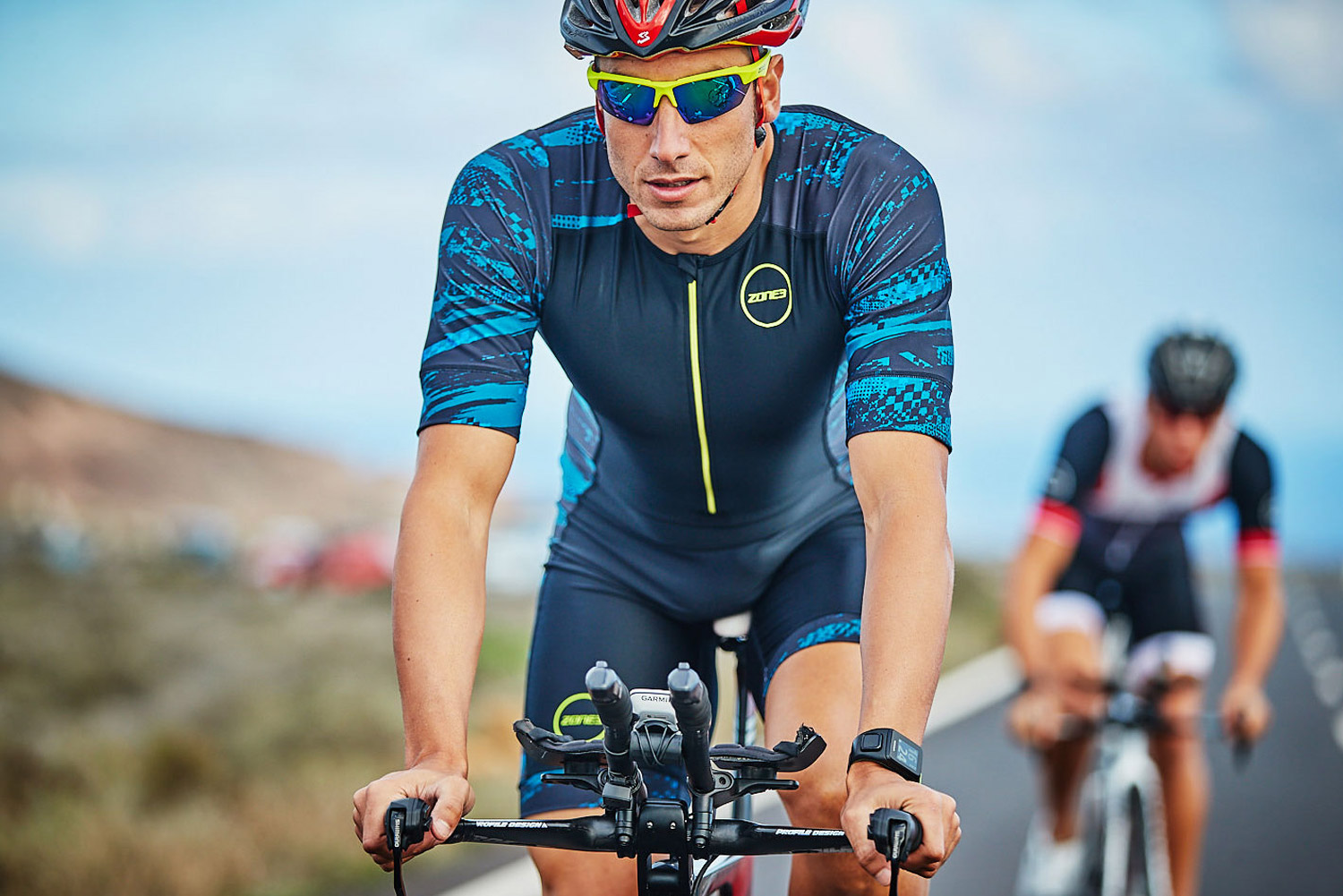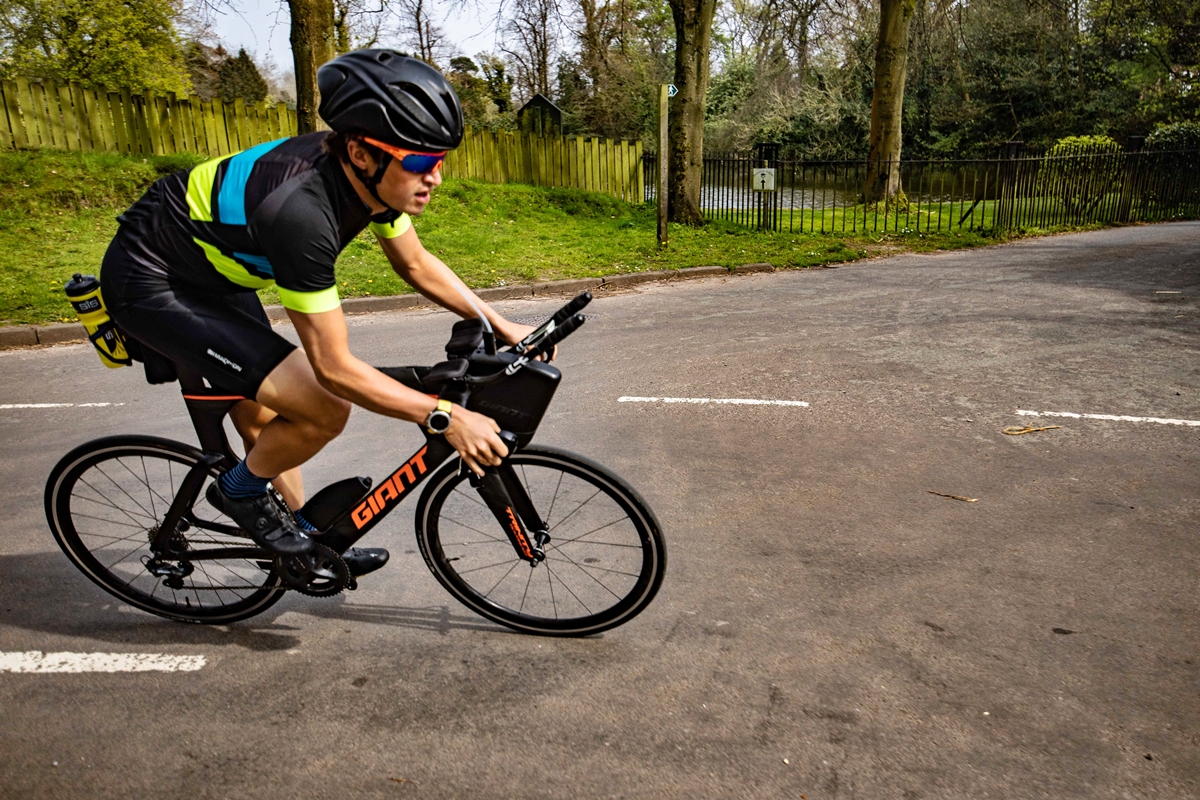

Featured
How To Improve My Triathlon Bicycle
Modified: May 22, 2024
Looking to improve your triathlon bicycle? Check out our featured tips and tricks for optimizing your bike's performance and taking your training to the next level.
Introduction
Triathlon is an exciting and challenging sport that combines swimming, cycling, and running into one demanding event. When it comes to competing in a triathlon, having the right equipment plays a crucial role in your performance. One of the key components of your arsenal is your triathlon bicycle. A well-chosen and properly fitted bike can make a significant difference in your speed, efficiency, and overall race experience.
In this article, we will explore various strategies and techniques to help you improve your triathlon bicycle. Whether you are a seasoned triathlete looking to fine-tune your performance or a beginner aiming to maximize your potential, these tips and insights will prove invaluable.
Before diving into the specifics, it’s essential to emphasize the importance of finding the right bicycle. There is no one-size-fits-all when it comes to choosing a triathlon bike. Factors such as your body type, budget, and level of experience are crucial considerations.
Investing time and effort into researching different bike options, visiting local bike shops for expert guidance, and even consulting with professional coaches will ultimately pay off in ensuring you find a bike that complements your goals and needs.
Once you have your triathlon bicycle, it’s essential to focus on achieving a proper bike fit. A bike fit involves adjusting various aspects of your bike, such as saddle height, handlebar reach, and cleat position, to optimize your comfort, power transfer, and aerodynamics. A professional bike fit is highly recommended, as they have the knowledge and tools to make precise adjustments based on your individual body mechanics.
Improving your cycling technique is another critical aspect of maximizing your triathlon bike performance. Efficient pedaling, proper body position, and effective use of gears can all contribute to increased speed and energy conservation. Consider working with a cycling coach or joining a local cycling group to refine your technique and receive valuable feedback.
Training for strength and endurance is also essential for enhancing your triathlon bike performance. Incorporating interval training, hill repeats, and long-distance rides into your training regimen will help build the necessary stamina and power needed for longer races. Additionally, cross-training activities such as strength training and yoga can strengthen your core and improve your overall fitness, ultimately benefiting your cycling abilities.
Upgrading your bike components can also have a significant impact on your performance. Upgrading to lighter and more aerodynamic wheels, a more efficient drivetrain, or adding aero bars can all contribute to increased speed and improved efficiency. However, it’s important to assess your needs and prioritize upgrades based on your specific goals and budget.
In addition to performance enhancements, proper maintenance and care for your bike are crucial to ensure its longevity and optimal functioning. Regular cleaning, lubrication, and inspection of components will not only keep your bike in top condition but also prevent potential issues that may arise during races.
By following these strategies and tips, you can enhance your triathlon bicycle performance and make your racing experience even more enjoyable and fulfilling. Remember, success in a triathlon is a combination of training, equipment choice, and understanding the fundamentals of each discipline. Don’t underestimate the impact a well-prepared and maintained bike can have on your overall race performance.
Choosing the Right Triathlon Bicycle
When it comes to selecting a triathlon bicycle, there are several factors to consider to ensure you make the right choice. Your bike will be your trusted companion in training and racing, so finding the perfect fit is essential for maximizing your potential.
The first consideration in choosing a triathlon bike is your budget. Triathlon bikes can range significantly in price, from entry-level options to high-end models with cutting-edge features. It’s crucial to establish a budget that aligns with your financial capabilities and allows you to make an informed decision.
Next, you need to consider the frame material. The most common materials used in triathlon bikes are carbon fiber, aluminum, and steel. Carbon fiber frames are known for their lightweight and stiffness, providing excellent power transfer and efficiency. Aluminum frames are more affordable and durable, making them a popular choice for beginners. Steel frames offer a comfortable ride but tend to be heavier compared to carbon fiber and aluminum.
Your body geometry and riding style should also dictate the type of bike you choose. Triathlon bikes typically have a more aggressive geometry with a steeper seat tube angle and lower handlebars, promoting an aerodynamic position. However, if you have flexibility or comfort issues, a road bike or a bike with a more relaxed geometry may be a better fit for you.
Additionally, bike size is a crucial consideration. A bike that is too big or small for your body can lead to discomfort, reduced power output, and an increased risk of injury. Visit a local bike shop and get professionally fitted to determine the correct frame size and make necessary adjustments to customize the bike’s fit to your unique body measurements.
Consider the type of courses you will be racing on when choosing your bike. If you often encounter hilly terrain, a bike with a wider gear range and better climbing capabilities might be advantageous. On the other hand, if you frequently race on flat courses, you may prioritize aerodynamics and choose a bike with a more aggressive position and aerodynamic features such as deep-section wheels and aero bars.
Finally, don’t overlook the importance of test riding and seeking expert advice. Visit local bike shops, attend triathlon expos, and take advantage of the opportunity to test ride different bikes. This will give you a firsthand experience of how the bike handles, fits, and feels, helping you make an informed decision.
Choosing the right triathlon bicycle is a personal decision that requires careful consideration. By evaluating your budget, frame material, body geometry, riding style, course characteristics, and seeking expert advice, you can find a bike that aligns with your goals and sets you up for success on race day.
Proper Bike Fit
Having a proper bike fit is essential to ensure comfort, efficiency, and injury prevention while riding your triathlon bicycle. A bike that is properly fitted to your unique body mechanics will enhance your performance and reduce the risk of discomfort or injury during training and racing.
One of the most critical aspects of a proper bike fit is saddle height. The height of your saddle affects your pedaling efficiency and power transfer. When your leg is at the bottom of the pedal stroke, there should be a slight bend in your knee, but not too much. Adjusting the saddle height to the optimal position will allow you to generate power with each pedal stroke while avoiding unnecessary strain on your knees.
The reach to your handlebars is another vital element of bike fit. Having the correct handlebar reach ensures a comfortable riding position and proper weight distribution. If your handlebars are too far away, it can strain your lower back and shoulders. If they are too close, it can restrict your breathing and limit your power output. Adjusting the stem length and handlebar position can help achieve the optimal reach for your body.
Proper cleat position is crucial for optimizing power transfer and reducing the risk of injury. Cleats that are too far forward or back can put unnecessary strain on your knees and ankles. Seek professional assistance to determine the correct cleat position to ensure proper alignment and efficient pedaling mechanics.
Aerodynamics is another consideration when it comes to bike fit. Triathlon bikes are designed with aggressive geometry to minimize wind resistance. Achieving an aerodynamic position can be challenging but can greatly improve your efficiency on the bike. Practice maintaining a low and streamlined position while riding to reduce drag and conserve energy. Investing in aerodynamic components, such as an aerodynamic helmet or aero bars, can also enhance your overall aerodynamic profile.
It’s essential to consult with a professional bike fitter to ensure your bike fit is precise and tailored to your individual needs. A bike fit professional will have the knowledge and expertise to make adjustments based on your body measurements, flexibility, and riding style. They can fine-tune your bike fit to maximize your comfort, pedaling efficiency, and power output.
Regularly reassess your bike fit as your fitness and flexibility improve or change over time. Parts of your body, such as flexibility or strength, may evolve, requiring slight adjustments to maintain an optimal bike fit. Regularly checking your bike fit will help you stay comfortable and perform at your best.
A proper bike fit is an investment in your comfort, performance, and long-term enjoyment of cycling. By paying attention to saddle height, handlebar reach, cleat position, and your overall aerodynamic position, you can optimize your riding experience and reap the benefits of a well-fitted triathlon bicycle.
Improving Your Cycling Technique
Having good cycling technique is essential for maximizing your performance on the triathlon bike. Proper technique not only improves your efficiency and speed but also reduces the risk of injury. Whether you are a beginner or an experienced cyclist, focusing on refining your cycling technique can lead to significant improvements in your overall triathlon performance.
One of the key elements of cycling technique is pedaling efficiently. Smooth and consistent pedaling is crucial for optimal power output and energy conservation. Aim for a circular pedal stroke, applying power throughout the full revolution of the pedals. Avoid “mashing” on the pedals or stomping down too hard, as this can waste energy and strain your muscles. Practice cadence drills to improve your ability to pedal at a consistent and efficient cadence.
Proper body position on the bike is another critical aspect of cycling technique. Maintain a neutral spine, with a slightly tilted pelvis, to achieve a comfortable and aerodynamic position. Keep your upper body relaxed, shoulders down, and elbows slightly bent. Engage your core muscles to provide stability and support on the bike. Improper body position can lead to discomfort, decreased power output, and an increased risk of injury.
Effective use of gears is essential for optimizing your cycling technique. Understanding when and how to shift gears can significantly impact your speed and energy conservation. Shift to an easier gear before reaching a hill to maintain a consistent cadence and avoid excessive strain on your muscles. Shift to a harder gear when descending or riding on flat terrain to capitalize on your power and maintain momentum.
Cornering is another technique that requires attention. Approach corners with confidence, leaning your bike, and maintaining your speed through the turn. Look through the corner and direct your body towards the exit, allowing for a smooth and controlled exit. Practice cornering techniques in a safe environment to improve your ability to navigate turns efficiently.
Another important aspect to consider is maintaining a proper distance from other cyclists. Riding too closely to the cyclist in front of you can be dangerous and increases the risk of accidents. Leave a safe distance to allow for sudden stops or changes in direction without colliding with others. Practice group riding skills to enhance your ability to ride safely and effectively in a pack.
Technique drills and interval training can also help improve your cycling technique. Incorporate drills such as high cadence intervals, hill repeats, and single-leg drills into your training routine to target specific areas of your cycling technique. These drills will not only enhance your muscle balance, power, and efficiency but also reinforce good cycling habits.
Consider seeking guidance from a cycling coach or joining a local cycling group to receive feedback on your technique. An experienced coach can provide personalized insights and correct any flaws in your cycling technique. Riding with others also offers an opportunity to observe and learn from fellow cyclists.
Improving your cycling technique takes time and practice. Focus on pedaling efficiently, maintaining a proper body position, using gears effectively, practicing cornering techniques, keeping a safe distance from other cyclists, and incorporating technique drills into your training. By honing your cycling technique, you can ride faster, more efficiently, and with greater confidence in your triathlon races.
Training for Strength and Endurance
Strength and endurance are two key components of successful triathlon performance. Training specifically to improve these areas will not only enhance your overall fitness but also enable you to excel on the bike during your races. Incorporating targeted strength and endurance training into your routine can make a significant difference in your triathlon bicycle performance.
Strength training plays a vital role in improving your power output and muscular endurance on the bike. By incorporating exercises that target the muscles used in cycling, such as quadriceps, hamstrings, glutes, and core, you can enhance your ability to generate power and sustain it over longer periods. Focus on exercises such as squats, lunges, deadlifts, and planks to build strength and stability in the key muscle groups used in cycling.
In addition to muscle strength, muscular endurance is also crucial for long-distance biking. Endurance-based exercises, such as long rides, hill repeats, and intervals, help improve your ability to sustain a high pace for an extended period. Gradually increase the duration and intensity of your training sessions to build your endurance gradually.
Interval training can be particularly beneficial for improving your cycling endurance. Incorporate high-intensity intervals into your rides, alternating between periods of high effort and periods of recovery. This type of training improves your body’s ability to efficiently use oxygen, enhances your lactate threshold, and builds mental resilience for pushing your limits during races.
Building a solid cardiovascular base is also essential for endurance training. Incorporate regular cardiovascular activities such as running or swimming to improve your aerobic capacity, which will translate into stronger performances on the bike. Cross-training activities not only diversify your training routine but also help prevent overuse injuries.
As with any training program, it’s crucial to listen to your body and ensure you have adequate rest and recovery. Overtraining can lead to decreased performance, increased risk of injury, and burnout. Incorporate regular rest days into your schedule and prioritize sleep and nutrition to support your training efforts.
Consider seeking guidance from a triathlon coach or a cycling-specific trainer. They can help design a customized training plan tailored to your specific goals and fitness level. A coach can also provide valuable feedback on technique, offer motivation, and hold you accountable to your training program.
Finally, stay motivated and enjoy the process. Training for strength and endurance requires dedication and perseverance. Set realistic goals, celebrate your achievements, and embrace the challenges as opportunities for growth. Surround yourself with a supportive community of fellow athletes to stay motivated and inspired along your journey.
By incorporating strength and endurance training into your routine, you can significantly enhance your performance on the triathlon bicycle. Building strength, improving endurance, and maintaining a balanced training program will help you reach new levels of success in your races and achieve your triathlon goals.
Upgrading Your Bike Components
Upgrading your bike components can be a great way to enhance your triathlon bicycle and elevate your performance. While the impact of component upgrades may vary depending on your current setup and goals, making strategic upgrades can make a noticeable difference in your speed, efficiency, and overall race experience.
One of the most effective upgrades you can consider is investing in a set of lightweight and aerodynamic wheels. A high-quality wheelset can significantly reduce rolling resistance, improve your bike’s handling, and enhance your overall speed. Look for wheels with a deep-section rim profile and a smooth, efficient hub for maximum performance gains.
Upgrading your drivetrain can also have a significant impact on your bike’s performance. A smoother and more responsive shifting system can help you maintain momentum and optimize your pedaling efficiency. Consider upgrading to a higher-quality groupset that offers lighter weight, more gearing options, and smoother shifting.
Aerodynamics play a crucial role in triathlon racing, and adding aerodynamic components to your bike can make a noticeable difference in your speed. Aero bars are a popular option to help you achieve a more aerodynamic position, reducing wind resistance and improving your overall efficiency. Additionally, an aerodynamic helmet, aero seatpost, or aero frame can further enhance your bike’s aerodynamic profile.
Another component to consider upgrading is your saddle. A comfortable and supportive saddle can make a significant difference in your riding experience, especially during long-distance races. Look for a saddle that suits your body geometry, offers adequate padding, and provides proper support in the areas you need it most.
Other components that can be worth upgrading include your pedals, brakes, and handlebars. Upgrading to a lighter and more efficient pedal system, such as clipless pedals, can improve your power transfer and overall pedaling efficiency. High-quality brakes offer better stopping power and improved modulation, giving you more control on descents and tight turns. Consider upgrading to a handlebar that offers better ergonomics and a more comfortable grip, reducing fatigue on longer rides.
When deciding which components to upgrade, it’s essential to assess your specific needs and goals. Consider your budget, the areas where you feel your current setup is lacking, and the upgrades that will provide the most noticeable improvements within your budget range. Prioritize upgrades based on the components that will have the most significant impact on your overall performance.
Once you have chosen the components to upgrade, take the time to research and find the best options within your budget. Compare different brands, read reviews, and consider seeking the advice of experts or experienced cyclists to ensure you make an informed decision.
Keep in mind that the bike frame itself is the foundation of your bike’s performance. Investing in a high-quality frame that suits your body geometry and riding style should be a priority before considering component upgrades. A great set of components on a poorly fitting or low-quality frame will not provide the performance gains you desire.
Upgrading your bike components can be an exciting and worthwhile endeavor to improve your triathlon bicycle. By strategically choosing your upgrades, focusing on areas that will have the most significant impact, and ensuring a proper fit, you can optimize your bike’s performance and take your triathlon racing to the next level.
Maintenance and Care Tips
Maintaining and caring for your triathlon bicycle is essential for ensuring its longevity, performance, and safety. Regular maintenance and proper care will not only keep your bike in top condition but also reduce the risk of unexpected breakdowns during training or racing. By following these maintenance and care tips, you can keep your triathlon bicycle running smoothly and efficiently.
Regular cleaning is a fundamental aspect of bike maintenance. After each ride, use a gentle cleaning solution and a soft brush or sponge to remove dirt, mud, and grime from your bike’s frame, wheels, and components. Pay particular attention to hard-to-reach areas such as the drivetrain and brake calipers. Rinse thoroughly with water and dry your bike with a clean towel to prevent any water from causing corrosion.
Lubrication is critical for maintaining proper functionality and preventing wear on your bike’s moving parts. Apply a quality bike-specific lubricant to the chain, derailleurs, and other relevant components according to the manufacturer’s instructions. Wipe off any excess lubricant to prevent attracting dirt and debris.
Regular inspection of your bike’s components is crucial for identifying any potential issues or wear. Check for loose bolts, cracks, or signs of damage on the frame, handlebars, and other key components. Pay attention to the condition of the brake pads and the wear on the chain and cassette. Address any issues promptly to prevent further damage and maintain a safe riding experience.
Tire maintenance is also essential for optimal performance and safety. Check the tire pressure regularly, as underinflated or overinflated tires can affect your bike’s handling and increase the risk of punctures. Inspect the tires for cuts, bulges, or excessive wear and replace them as needed. Additionally, ensure that the tires are properly seated on the rims and that the quick release or thru-axle is securely tightened to prevent wheel slippage.
Proper storage is crucial to prevent damage and ensure your bike is ready to ride when you need it. Store your bike in a dry and clean environment, ideally indoors or in a bike-specific storage area. Use a bike rack or wall mount to keep your bike off the ground and minimize the risk of accidental damage. Avoid hanging your bike by the wheels as it can put undue stress on the spokes and rims.
Regularly check and maintain your bike’s braking system. Inspect the brake pads for wear and replace them if necessary. Adjust the brake calipers to ensure proper alignment with the rims and that the brakes engage smoothly and effectively. Check the brake cables for fraying or signs of damage, and replace them if needed.
If you are not confident in performing maintenance tasks yourself, consider taking your bike to a professional bike shop for regular tune-ups and servicing. They have the expertise and specialized tools to thoroughly check and maintain your bike and address any potential issues that may affect performance and safety.
Lastly, practice proper bike care and handling when transporting your bike. Use a bike carrier or protective bike bag when traveling to prevent damage during transportation. Be mindful of the bike’s position and secure all loose parts to prevent any unnecessary movement or potential damage.
By following these maintenance and care tips, you can keep your triathlon bicycle in excellent condition and enjoy a smooth and safe riding experience. Regular cleaning, lubrication, inspection, tire maintenance, proper storage, and seeking professional help when needed will ensure your bike is always ready to perform at its best.
Conclusion
Improving your triathlon bicycle requires a multifaceted approach that encompasses various aspects, including choosing the right bike, achieving a proper bike fit, honing your cycling technique, training for strength and endurance, upgrading your bike components, and maintaining proper care and maintenance. By focusing on each of these areas, you can optimize your bike’s performance, enhance your efficiency, and elevate your overall race experience.
When it comes to choosing the right triathlon bicycle, take the time to research and consider factors such as your budget, body geometry, riding style, and race courses. A well-chosen bike that fits you properly will provide a solid foundation for your training and racing endeavors.
Investing in a proper bike fit is crucial for achieving comfort, efficiency, and injury prevention. A professional bike fit will optimize your positioning, allowing you to generate power more effectively and reducing the risk of strain or discomfort during long rides.
Improving your cycling technique through proper pedaling, body positioning, gear usage, and cornering techniques will enhance your efficiency and speed on the bike. Practice technique drills, interval training, and seek feedback from experienced cyclists or coaches to refine your skills.
Strength and endurance training are vital for maximizing your cycling potential. Incorporate targeted strength exercises, endurance-based rides, and interval training to build the necessary power and stamina for triathlon races.
Upgrading your bike components strategically can lead to noticeable improvements in performance. Consider investing in lightweight and aerodynamic wheels, a more efficient drivetrain, aerodynamic components, and a comfortable saddle to enhance your speed and comfort on the bike.
Maintaining your triathlon bicycle through regular cleaning, lubrication, inspection, and proper storage will ensure its longevity and optimal functionality. Seek regular tune-ups and servicing with a professional bike mechanic to address any potential issues and keep your bike in top condition.
In conclusion, by combining these strategies and tips, you can improve your triathlon bicycle and elevate your performance to new heights. Remember, consistency and perseverance are key in achieving your goals. Enjoy the journey and embrace the challenges as you strive to become the best triathlon athlete you can be.
